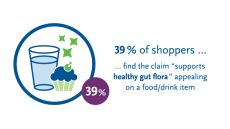Pectin, whey encapsulate vitamins for beverage
complex could extend their use in acidic beverages, suggests new
research from Canada.
At a protein:pectin ratio of 2:1 researchers from the Institute on Nutraceuticals and Functional Foods at Laval University in Quebec report that complexes containing the water-soluble vitamin thiamine could be prepared at pH 3.5, showing the potential of such vitamin-rich complexes for formulation in acidic beverages. The research could tap into the growing market for functional drinks, reported to have enjoyed value growth at 18 per cent in 2006, according to a report by drinks company Britivic and market researcher Nielsen. Well-being drinks, those which offer health benefits beyond basic nutrition, is the third fastest growing drinks category and has now reached £841m in value. The new results suggest that the new vitamin complex could offer formulators a new way of fortifying acidic beverages with water-soluble ingredients, like thiamine. "At pH 3.5 (in both methods of acidification), the thiamine content of the complexes … allows fulfilling the Recommended Daily Allowance of the vitamin for an adult male (1.4 mg), with 70-80 mg of the dry complexes," wrote Gerard Bédié, Sylvie Turgeon, and Joseph Makhlouf in the journal Food Hydrocolloids. The right path to thiamine encapsulation The researchers tested three different ratios of low methoxyl pectin (LMP, donated by CP Kelco) to whey protein isolate (BiPRO WPI, Davisco Foods International) of 2:1, 1:1 and 1:2, and adjusted the pH of the solution to 4.0, 3.5, 3.0, and 2.5 either before or after blending. The optimum results were achieved for a protein:pectin ratio of 2:1, wrote the researchers. Moreover, at a pH of 3.5 to 3.0, the maximum amount of thiamine was incorporated into the complex, regardless of pre- and post-blending acidification. Seven per cent thiamine was trapped for pre-blending and 4.5 per cent for post-blending. "The characteristics associated with post-blending acidification at a protein:pectin ratio of 2:1 provided the best structure for thiamine entrapment," wrote Bédié, Turgeon and Makhlouf. "Although thiamine entrapment with both pre and post-blend systems indicated optimum entrapment at pH 3.5, which is appropriate for acidic foods, post-blending acidification may be preferred for hydro-soluble ingredients, considering the structural advantages of the resulting complexes." The researchers confirmed that studies were ongoing in their laboratory in order to elucidate "the effect of vitamin concentration on thiamine content of the complexes and the protective effect of the complexes on the entrapped-vitamin". Source: Food Hydrocolloids (Elsevier) Volume 22, Issue 5, Pages 836-844 "Formation of native whey protein isolate-low methoxyl pectin complexes as a matrix for hydro-soluble food ingredient entrapment in acidic foods" Authors: G.K. Bedie, S.L. Turgeon, J. Makhlouf























